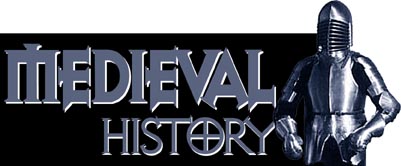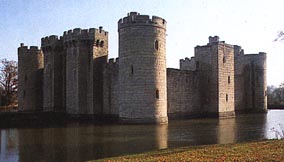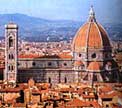Highlands Ranch High School - Mr. Sedivy
Highlands Ranch, Colorado

-
The Middle Ages -
Clovis, Charles the Hammer,
Charlemagne, Magyars, and the Vikings
Feudalsim and the Life of a Serf
Clovis
Clovis became King of the Franks in 481. He united all Frankish
tribes, and conquered Romans and Germans in Northern Gaul. The unification
fell apart after his death because his sons messed it up.

A 13th-century illumination depicts the baptism of
Clovis in 496.
Clovis was the pagan conqueror of Gaul.
Charles the Hammer
In 732, Charles the Hammer (Charles Martel) defeated Muslims at
Battle of Tours. The defeat moved Europe toward Christianity and
away from Islam. With out this victory, Europe may have become a
Muslim nation, and our (US) history would be different. The Battle
of Tours united the Franks, and the Franks became the leading power
in western Europe. This increased the power of the church and the
Pope.
Charlemagne
Charlemagne (Charles the Great) was tall and powerful. He became
the leader of the Franks in 768. Charlemagne united the Franks and
expanded the kingdom, and promoted learning. In 800, on Christmas
day, he was crowned the Holy Roman Emperor. Even though he was a
strong Christian, he didn't like the Pope crowning him because he
feared the Pope would have more power. His empire blended Germanic,
Christian, and Roman elements.
Magyars
Magyars invaded north Italy and south Germany in the 9th Century,
contributing to the decline of central authority, disrupting trade,
hurting agriculture, and destroying settlements and monasteries.
The Magyars fought on horseback, which led to Europeans fighting
on horseback. The Magyars led to an increase in feudalism and a
decline in monarchs' power.
Vikings
Vikings invaded Western Europe in the 9th and 10th Centuries, causing
massive destruction.
Feudalism and the Life of a Serf

Bodiam Castle. Built in the 1300's
Reflects the Norman style of William the Conqueror
Feudalism
Feudalism was the political and social structure during the Middle
Ages. Feudalism organized to satisfy the two most basic needs of
the time: protection and food. Landowning nobles had lots of power.
Almost everyone lived on a manor - There was no need for trade as
everything needed was produced on the manor.
 King Nobles, "lords," owed allegiance to the king.
King Nobles, "lords," owed allegiance to the king.
 Clergy - appointed by nobility.
Clergy - appointed by nobility.
 Vassals - free people.
Vassals - free people.
 Serfs, 98% of the population, worked land for nobles in exchange
for protection. They came with the land, like the buildings, forests,
streams, etc. The peasantry became bound to the land and dependent
on landlords for protection and the administration of justice. Among
the warrior aristocracy the most important social bonds were ties
of kinship, but feudal connections were also emerging.
Serfs, 98% of the population, worked land for nobles in exchange
for protection. They came with the land, like the buildings, forests,
streams, etc. The peasantry became bound to the land and dependent
on landlords for protection and the administration of justice. Among
the warrior aristocracy the most important social bonds were ties
of kinship, but feudal connections were also emerging.

King Offa and his architect visiting the cathedral
at St. Alban.
From an English manuscript of the life of St. Alban. 1260
The Life of a Serf
Serfs lived in crowded living areas (1-2 room cottage). Serfs had
many obligations to lord in exchange for protection. They turned
over all crops to the lord, and paid for using the lord's stuff
by giving some crops from their own strips of land. Serfs worked
about three days a week for the lord, and they practiced crop rotation.
A serf could not leave the manor with out the lord's
permission. They could be told who to marry, but they did have some
rights - their kids couldn't be taken away. Serfs had simple diets
and traveling minstrels and entertainers came to the manor. Serfs
rarely left the manors, knew almost nothing of the outside world,
and usually didn't rebel.
Back to Top of Page



![]() 9375 South Cresthill Lane
9375 South Cresthill Lane ![]() Highlands Ranch, Colorado 80126
Highlands Ranch, Colorado 80126 ![]() 303-471-7000
303-471-7000



